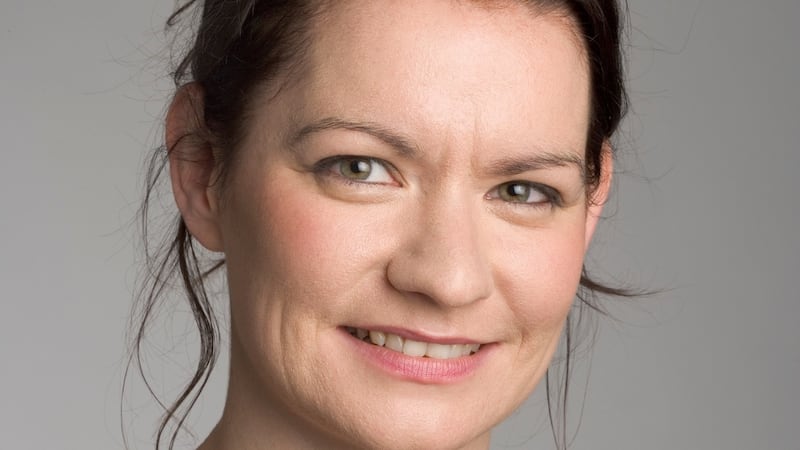The list of accidental discoveries is long and varied: super glue, chocolate chip cookies, penicillin, Velcro, Vaseline. Sometimes, it seems, you need to be pointed in the wrong direction, or even looking for something else entirely. That could certainly be applied to the Irish Language Art Song Project/Tionscadal na nAmhrán Ealaíne Gaeilge.
It all started with John Hess, Canadian pianist, music professor and co-founder, with his wife, Cork cellist Dáirine Ní Mheadhra, of Toronto's award-winning Queen of Puddings Music Theatre, which operated from 1995 to 2013.
Queen of Puddings was successful enough to bring individual awards for both of its founders. In 2012 Ní Mheadhra received the CA$50,000 Canada Council Molson Prize for the arts for “outstanding lifetime achievements and ongoing contributions to the cultural and intellectual life of Canada”. And in 2013 the couple shared an Opera Canada Ruby Award.

Hess was, until last December, head of collaborative piano studies at Western University, Canada, and about five years ago he got the idea of developing a module on Irish art song. He researched the subject at the Contemporary Music Centre (CMC), found hundreds of songs, and then dropped the bombshell that he had found only 17 in the Irish language – Ní Mheadhra, as her name might suggest, is a Gaelgeoir.
She took the bait, and set out to do something to remedy that small number. In Canada the couple set up a project titled Amhráin ar an Nua-Nós, which was described as a “long-term Canada-Ireland project to commission, create and produce a body of original contemporary art song and chamber opera, written solely in the Irish language”. And when that didn’t get off the ground, they successfully created the Irish Language Art Song Project in Ireland. The venture received a grant of €148,718 from the Arts Council’s Open Call 2019 scheme.
So, where's the accidental in all of this? Well, the 17 songs is actually a misleading total. It seems to detail only the number of relevant holdings in the CMC archive. The CMC was set up in 1985, and its greatest focus has always been on living composers. The 1973 edition of Edgar Deale's Catalogue of Contemporary Irish Composers lists 22 songs in Irish, even though it omits the Trí hAmhráin by Aloys Fleischmann which were published by An Gúm under the nom de plume Muiris Ó Rónáin in the 1940s and included in a touring programme by Cara O'Sullivan in 2010.
Bernard Harrison’s Catalogue of Contemporary Irish Music, published in 1982 by the Irish Composer’s Centre, precursor of the CMC, added a further nine. This doubles Hess’s tally to 34, still a small number, but somehow a lot more respectable sounding one than 17. Maybe lower is better when it comes to sparking the kind of indignation that will set a major project into motion.
The project summary on the Arts Council’s funding page gives a succinct picture of what’s at the core of the project – to “commission 50 new art songs composed on Irish language texts, to create supporting materials for these songs that facilitate comprehension and pronunciation, and to disseminate the songs in a format that allows any singer anywhere in the world the possibility of singing an art song in Irish”.
Free to download
The project website, cmc.ie/AmhrainEalaineGhaeilge, has recordings and pdfs of the scores that are free to download. The site also has spoken readings of the texts and there is phonetic guidance within the scores. In terms of projects promoting Irish music, it is nonpareil.
So what do the numbers mean in real life? A doubling of the repertoire has to be good news. There are already performers who have the songs in their repertoires, and not just at the rate of one singer per composer – the series of concert performances of the 50 new works which began on Saturday does not use exactly the same line-up of singers as the recordings on the website.
But the number has to be assessed in the light of what you might call critical mass. Think of the repertoire of the late, great Dutch bass clarinettist, Harry Sparnaay, who appeared in Ireland in solo recitals, and in collaboration with both Concorde and Crash Ensemble. He was a living legend with a vast repertoire, and he was instrumental in the creation and first performance of more than 600 works.
Yet most people would struggle to name a single piece with which he was associated.
Sparnaay, of course, worked for much of his career in a world where radio broadcasts, LPs, cassettes and CDs ruled the roost in the dissemination of music, old and new. The Irish Language Art Song Project has taken account of the reach of the internet, but so far in a way that leaves it outside the realm of the most popular streaming/download sites.
Concerts
The first of the three programmes presenting all 50 new works in concert took place at the National Concert Hall's Kevin Barry Recital Room on Saturday, with songs by Kevin O'Connell, Oscar Strasnoy, Ashkan Behzadi, Garrett Sholdice, Jonathan Nangle and Ana Sokolovic performed by sopranos Anna Devin and Daire Halpin and tenor Andrew Gavin, with John Hess at the piano.
The composers’ poetic taste and expressive reach varies widely, in settings that range from pared-back to full-on, from the traditionally songful to the modernistically angular. All tastes are catered for.
The short-term test will be the rate at which the project’s songs are adopted by other singers, and obviously, in the first instance, by other Irish singers.
Songs by Ryan Molloy, Linda Buckley, Anna Pidgorna, Andrew Hamilton and Jennifer Walshe feature in Wednesday's Irish Language Art Song Project at the NCH Kevin Barry Recital Room, see iti.ms/2SBAfsc
















